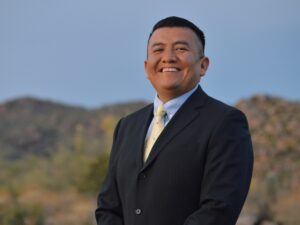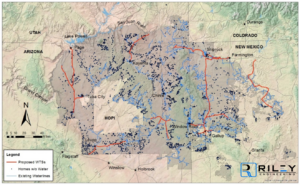The disproportionate high rates of COVID-19 on the Navajo Nation (Nation) has recently made headlines at the world stage and has brought to light the lack of in-home sanitation facilities and lack of potable water infrastructure coverage.
This lack of this critical water infrastructure has been attributed as one of the primary reasons for the disproportionately high rates of COVID-19 cases on the Nation as many residents do not readily have access to the clean water needed for handwashing and other sanitary uses.

Ronson R. Chee, Ph.D., P.E.; Principal Water Resources Engineer, Rainmaker Media Group, LLC. (Photos contributed)
The lack of potable water infrastructure coverage on the Nation has been a long-standing issue prior to the COVID-19 pandemic and is also one of the primary underlying causes for the multitude of issues that plague the Nation such as high-poverty levels, low socio-economic status, lack of jobs, and other non-COVID-19 health disparities.
The influx of outside resources, donations and support has been good for the Nation during this calamitous time, but unfortunately a lot of the aid is only satisfying the immediate needs and is a temporary “band-aid” fix that is not addressing the root of the problem.
After the COVID-19 cases reduce and headlines subside, the overall underlying problem still will not have been addressed.
The Nation will be able to put out this fire, but what about a potential second wave of COVID-19? A different pandemic? Drought? Climate Change? Economic Recessions? These potential disruptions will also be exacerbated if the root of the problem is not addressed.
A significant effort must be spent on long-term solutions. Left un-addressed, the Nation will leave itself vulnerable to the next social disruption. Fixing the underlying issues requires a call to action from the Nation’s leaders and government departments to enact change.
The root cause for the lack of water infrastructure deficiencies on the Nation is the absence of a stable sustainable economy. As a sustainable economy is dependent on a reliable potable water infrastructure to support it, so is a sustainable water infrastructure is dependent on a sustainable economy.
Water infrastructure and economic development must be planned together. You cannot have one without the other.
What is needed is an integrated planning framework for water infrastructure implementation that can balance economic development and health objectives. A Nation-wide global master planned approach driven by a common vision is needed to plan, design, and integrate all stakeholders and agencies.
The master planning must be led by the Nation and not an outside agency. This integrated planning framework must also involve input from the Navajo Nation Council as to which water infrastructure projects should get funded.
With project capital cost needs greatly exceeding available funding, not all projects can be constructed simultaneously. Thus, the Nation’s leaders must decide which projects should be funded first and in a systematic manner, which is not an easy feat.
Eventually, the Nation needs to stop looking to outside resources to solve our problems.
We know what needs to be fixed, we know the issues better than anyone else. We live it, we know what it takes to haul water so why do we rely on outside people who have never hauled water a day in their life to solve our problems? Only the Navajo Nation can solve its own problems.
The Nation has the technical persons to address this problem. We have Navajo medical doctors, epidemiologist, water engineers and planners, accountants, lawyers, and experts in almost every field that can help solve these problems. The Nation must call on them, ask for help and put them to work.
A short paper is available summarizing some of key issues regarding the lack of water infrastructure on the Nation. It also provides some potential short- and long-term solutions. The paper can be found at https://riley-eng.com/publications. Feel free to contact me with questions and feedback at ronson@riley-eng.com.
Sincerely,
Ronson R. Chee, Ph.D., P.E.
Principal Water Resources Engineer, Rainmaker Media Group, LLC



